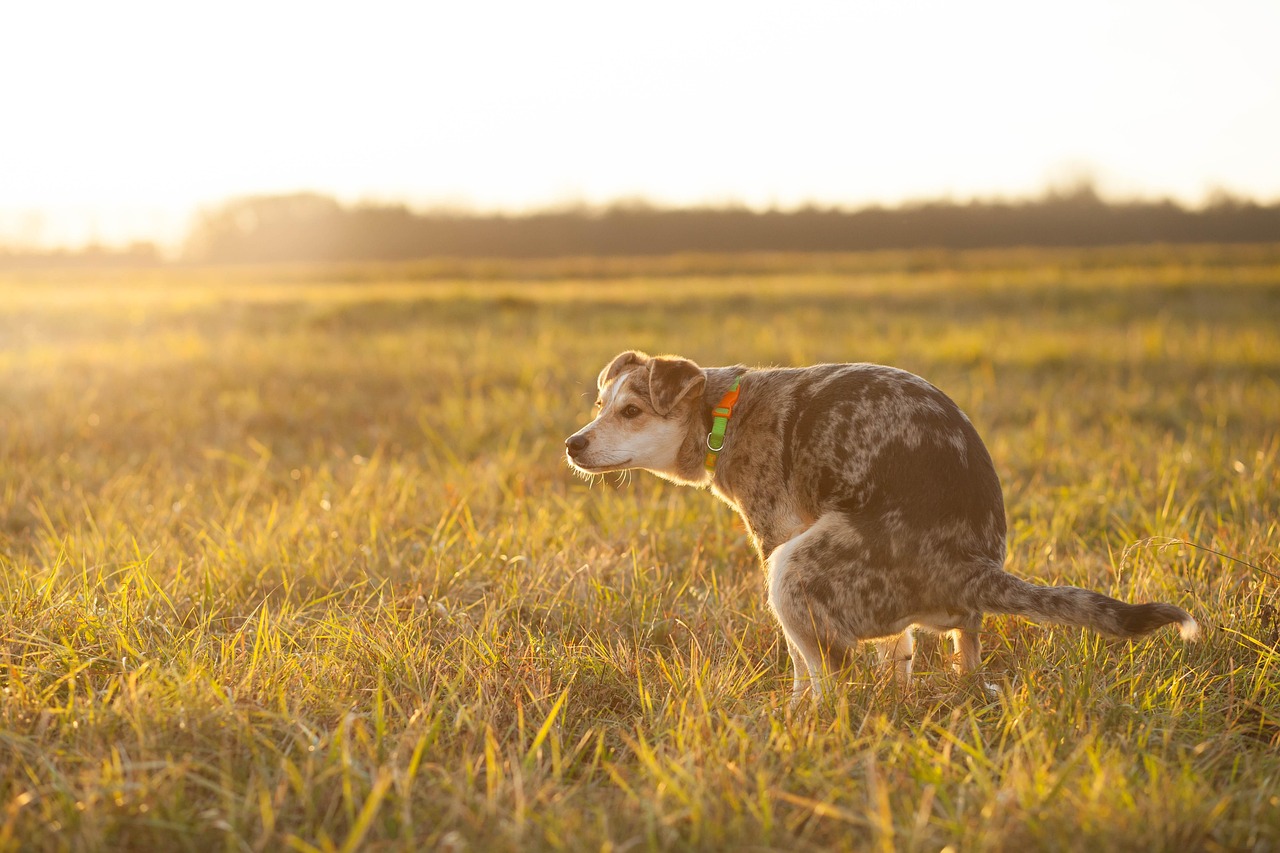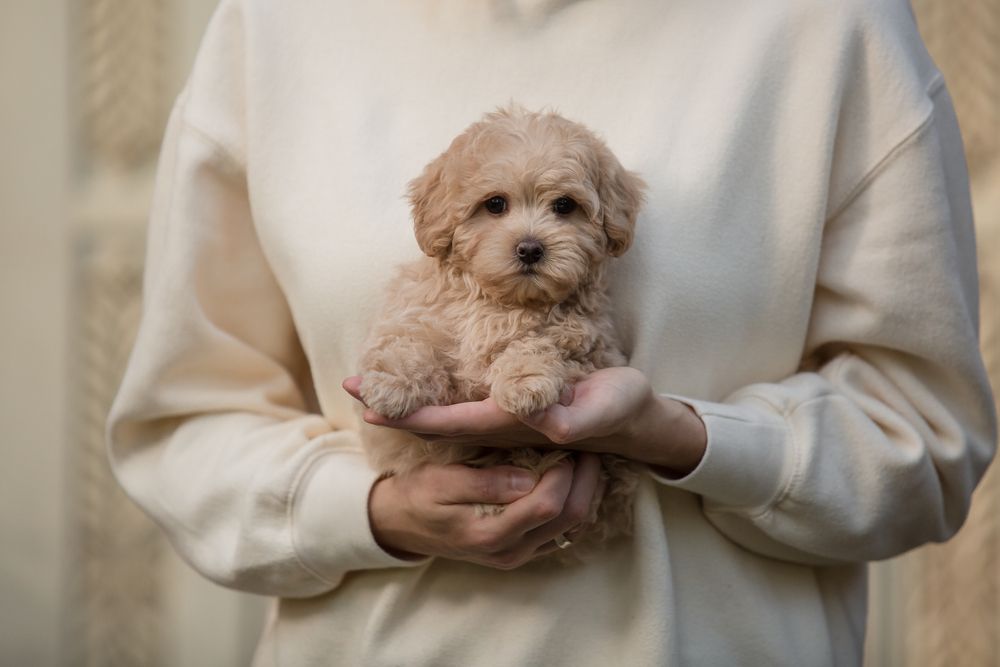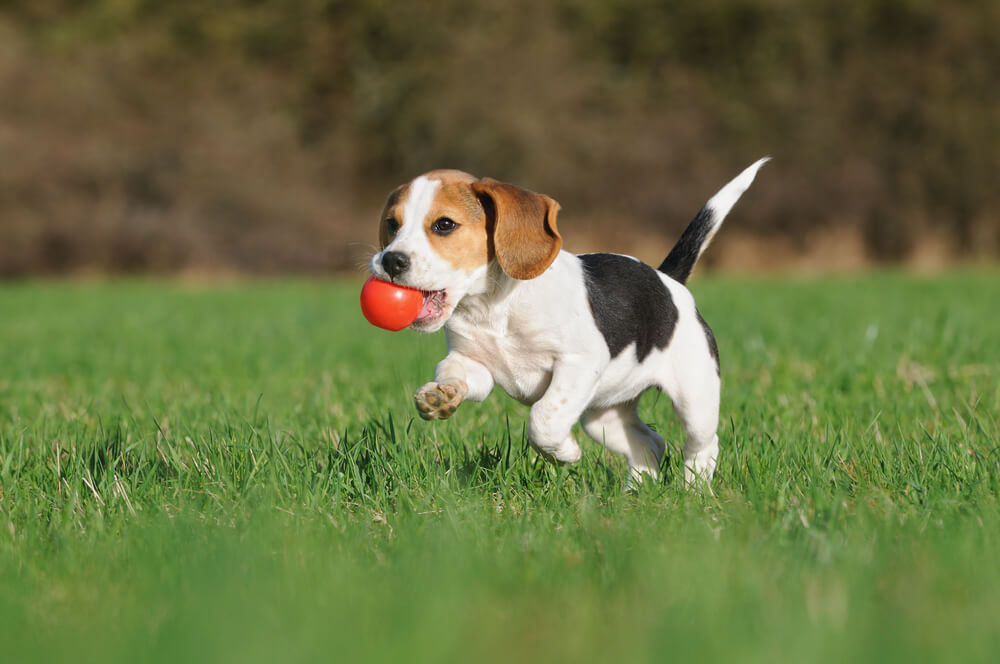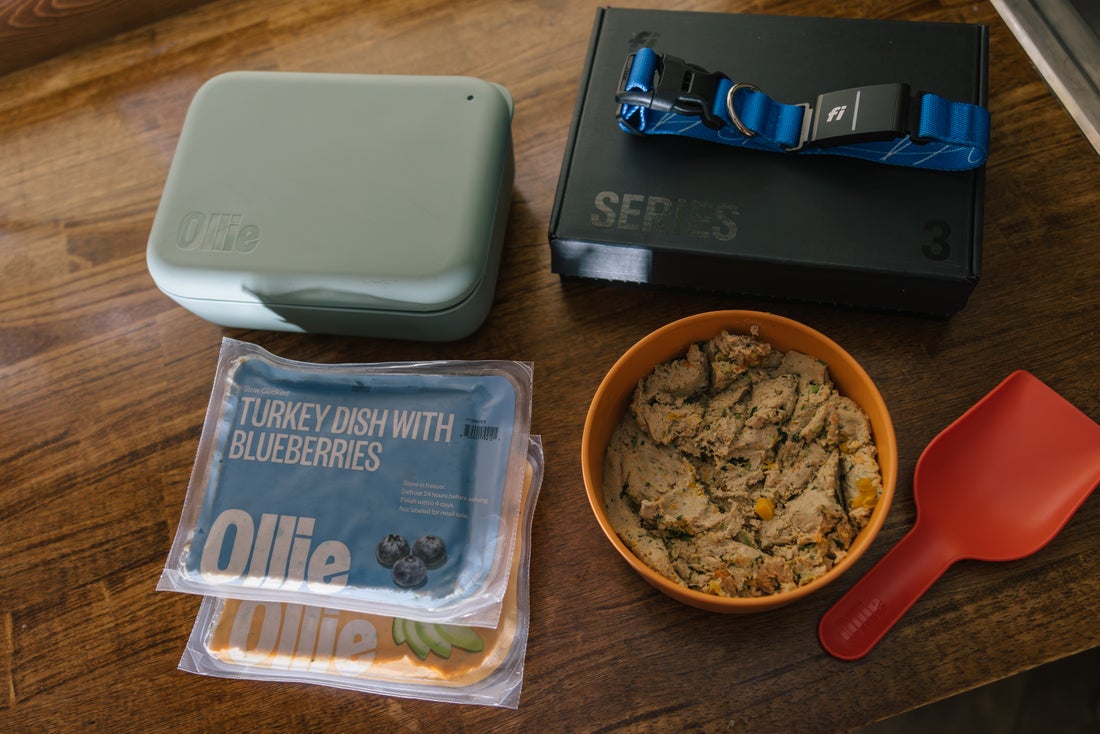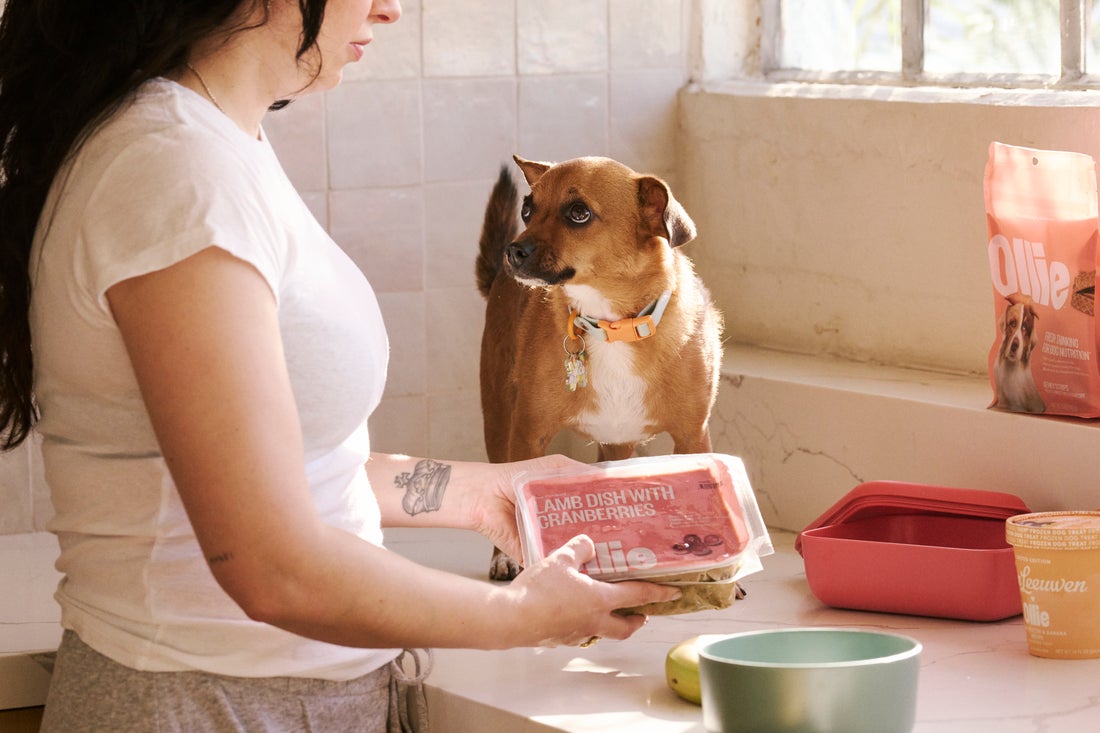Hey Ollie blog readers! We’re offering you an exclusive 60% OFF your starter box! Try now!
Let’s be honest—checking your dog’s poop probably isn’t your favorite part of pet parenting. But it’s one of those small habits that can make a big difference.
The truth is, your dog’s stool can be a useful health checkpoint. Changes in color, consistency, or frequency can reveal what’s happening inside your pup long before other symptoms show up. It’s not the most glamorous subject, but paying attention to what your dog leaves behind could help you catch issues early—and maybe even avoid a trip to the vet.
In this article, we’ll walk through what normal poop looks like, what different colors might mean, and when it’s time to be concerned. It’s everything you didn’t know you needed to know about your dog’s digestion—explained clearly, without any fluff (or stink).
What Healthy Dog Poop Looks Like
So what’s considered “normal” when it comes to dog poop?
A healthy dog’s stool is usually a medium brown color—not too dark, not too light. It should be firm enough to hold its shape, moist enough not to crumble, and easy to pick up without leaving much behind. Think solid but soft—somewhere between a Tootsie Roll and a soft log.
Here’s what to look for in a normal poop:
- Color: Consistent, medium brown
- Shape: Log-like and formed, not runny or pebbled
- Texture: Smooth and slightly soft—not sticky or hard
- Clean-up: Picks up easily, with minimal residue
Healthy poop tends to appear once or twice a day, depending on your dog’s diet, age, and activity level. Puppies might go more frequently, while older dogs or those on lower-fiber diets may poop less often.
Of course, every dog is different. What matters most is knowing what’s normal for your dog. Once you have that baseline, you’ll be more likely to catch early signs of discomfort, diet issues, or illness—just by glancing at what’s in the yard.
Dog Poop Color Chart: What Color Means For Digestive Health
If your dog’s poop suddenly looks different, color is one of the first things to pay attention to. A change in color doesn’t always mean something serious is wrong—but in some cases, it can be an early warning sign that something’s off inside your dog’s digestive system.
| Poop Color | Possible Cause | Action Needed |
| Brown (normal) | Healthy digestion | No concern |
| Light brown/tan | Fat malabsorption, enzyme deficiency | Vet check recommended |
| Yellow | Food intolerance, gut irritation | Monitor, consult if persists |
| Green | Grass, gallbladder issue, parasites | Check diet, call vet if ongoing |
| Black | Bleeding in upper GI tract | Urgent vet care |
| Red or blood-streaked | Colon irritation, rectal bleeding | Vet visit if recurring |
| White or gray | Bone-heavy diet or bile/liver issue | Vet visit recommended |
| Orange | Pigmented food or bile issue | Monitor, consult if unsure |
| Mucus-covered | Colitis, inflammation | Vet check if frequent |
Here’s a breakdown of the most common poop colors and what they might mean:
Brown (Healthy and Normal)
This is the goal. A medium brown color means your dog is digesting food properly and bile is doing its job. If your dog’s poop is this color consistently, you’re in good shape.
Light Brown or Tan
This may indicate your dog isn’t properly absorbing nutrients—especially fat. One possible cause is exocrine pancreatic insufficiency (EPI), a condition where the pancreas doesn’t produce enough digestive enzymes. It’s worth checking with your vet if you notice this color often.
Yellow
Bright yellow or mustard-colored stool can be linked to a sudden food change, food intolerance, or mild irritation in the gut. Sometimes it’s just your dog’s system reacting to something new. If it sticks around for more than a day or two, talk to your vet.
Green
If your dog snacks on grass regularly, green poop may be no big deal. But if they haven’t been munching on the lawn, it could signal a gallbladder issue or even intestinal parasites. If the color is persistent—or your dog seems unwell—get it checked.
Black or Very Dark Brown
This could mean there’s digested blood in the stool, often from the upper part of the gastrointestinal tract. Common causes include ulcers, NSAID side effects, or something more serious. Don’t wait—black stool warrants a vet visit.
Red or Blood-Streaked
Bright red streaks usually indicate bleeding in the lower digestive tract—like the colon or rectum. It might be caused by straining, irritation, or something more serious like colitis. If it shows up more than once, call your vet.
White or Chalky Gray
White or pale stools are often seen in dogs that have eaten a lot of bone. But if it’s chalky or clay-colored, it could be a bile flow issue or liver dysfunction. Best to have your vet take a look.
Orange
This can sometimes be caused by pigment in food (like carrots or sweet potatoes), but it could also signal a problem with bile production or liver health. If it’s not linked to diet and doesn’t resolve, it should be evaluated.
Mucus-Coated
If your dog’s poop is covered in clear or slimy mucus, it may be a sign of colitis, inflammation, or irritation in the gut. Occasional mucus isn’t always a big deal, but if it becomes frequent, it’s time to consult a vet.
Each of these colors offers a clue—but color alone isn’t enough to diagnose anything. Always look at the full picture: your dog’s energy level, appetite, and other symptoms matter just as much.
What Can Cause Sudden Changes in Poop Color?
If you notice a sudden shift in your dog’s poop color, don’t panic—but don’t ignore it either. A lot of everyday factors can affect the way your dog’s stool looks, especially in the short term.
Here are some of the most common reasons for sudden color changes:
1. Diet changes
Switching your dog’s food—or even adding new treats—can throw off their digestive balance temporarily. High-fat foods, heavily pigmented ingredients (like beets or carrots), or unfamiliar proteins can all impact stool color.
2. Eating something unusual
Dogs are opportunistic eaters. If your pup snuck a piece of grass, a stick, or even a crayon, it could show up in their poop later. Foreign objects can sometimes irritate the GI tract and lead to mucus, blood, or color shifts.
3. Medications or supplements
Some medications, like antibiotics or anti-inflammatory drugs, can upset the gut or alter stool appearance. Iron supplements, for example, often cause darker stool in both people and dogs.
4. Gastrointestinal irritation
Mild GI inflammation, whether from food sensitivities, infections, or minor illnesses, can change the way bile moves through your dog’s system—affecting the final color and texture of their poop.
5. Parasites or infections
Internal parasites like hookworms, giardia, or coccidia can inflame the gut lining and lead to diarrhea, mucus, or strange-looking stool. These conditions often come with other symptoms like weight loss, lethargy, or vomiting.
6. Stress or anxiety
Believe it or not, emotional stress can impact digestion, too. Big changes like moving, traveling, or even a noisy household can trigger digestive upset—and temporary poop color changes—in sensitive dogs.
When in doubt, think about what’s changed recently: food, environment, routine, or health. If the poop color change is a one-off and your dog seems normal otherwise, it may resolve on its own. If it sticks around or comes with other symptoms, it’s time to call your vet.
When to See a Vet About Your Dog’s Poop
While not every color change is a reason to rush to the vet, there are some clear signs that call for professional advice.
Call your veterinarian if you notice:
- Persistent color changes lasting more than 48 hours
- Black, tarry, or very dark stool (potential bleeding higher in the GI tract)
- Bright red streaks or visible blood in multiple stools
- White, gray, or chalky poop that doesn’t improve after a day or two
- Mucus-coated stool that happens frequently
- Vomiting, diarrhea, loss of appetite, bloating, or noticeable weight loss
- Behavioral changes like lethargy, restlessness, or discomfort when pooping
When you visit the vet, it’s helpful to bring:
- A fresh stool sample (if possible)
- A photo of the unusual poop (yes, your vet will appreciate it)
- A note about any recent diet, medication, or lifestyle changes
Early intervention often leads to quicker, simpler treatments. And if it turns out to be nothing serious? You’ll have peace of mind—which is always worth it.
How Diet Affects Dog Poop Color
It probably won’t surprise you to hear that what your dog eats shows up on the other end. But when it comes to poop color and quality, diet is one of the biggest factors—for better or worse.
Here’s how food can affect the color and consistency of your dog’s stool:
Protein source
Different proteins can cause subtle color shifts. For example, a beef-based diet may produce darker stool than chicken. Some fish-heavy diets might even leave a gray tint.
Fruits and veggies
Brightly pigmented foods like carrots, pumpkin, or blueberries can tint your dog’s poop temporarily—usually nothing to worry about if they’re otherwise healthy.
Fillers and artificial additives
Kibble made with low-quality grains, artificial dyes, or preservatives can irritate your dog’s gut, leading to loose, discolored, or mucus-filled stool.
High-fat or greasy meals
Too much fat can overwhelm the digestive system and result in pale or greasy-looking poop. Long-term, this can stress the pancreas and liver.
Digestibility
The more digestible your dog’s food is, the more “normal” their poop tends to be. That’s why dogs on fresh food diets—with gently cooked proteins and real veggies—often have smaller, firmer, more consistent stools.
At Ollie, we’ve seen thousands of dogs improve their poop quality after switching from processed kibble to fresh, balanced meals. Better ingredients mean better digestion—which usually leads to better (and less messy) bathroom results.
If your dog’s stool is regularly soft, inconsistent, or oddly colored, their food may be playing a bigger role than you realize.
Final Thoughts On The Color of Your Dog’s Poop
You may not love talking about poop—but paying attention to it could help you catch a health issue before it gets serious.
Knowing what’s normal for your dog—and spotting changes in color, consistency, or frequency—gives you insight into how well their digestive system is working. In many cases, a quick poop check can be your first clue that something in their diet, routine, or health needs adjusting.
Most stool color changes aren’t emergencies. But when something looks off and sticks around, don’t wait it out—especially if your dog seems uncomfortable or off in any other way. And if you’re seeing color swings all the time? It might be time to take a closer look at what’s going in your dog’s bowl.
Feeding fresh, nutrient-rich food can help stabilize your dog’s digestion, support their overall health, and (bonus) make clean-up a whole lot easier.
Want to help your dog produce healthier poops naturally—without all the guesswork?
It starts with what you feed them. At Ollie, we make fresh, human-grade meals that support your dog’s digestion from the inside out. No fillers. No artificial junk. Just real meat, veggies, and nutrients your pup actually needs.
If your dog’s poop has been inconsistent, too soft, too frequent, or just not quite right, a diet upgrade could make all the difference.
Take our quick quiz to build your dog’s personalized meal plan—and see how better ingredients lead to better digestion (and better poops).
Tagged As:
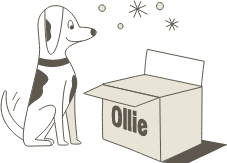
The nutrition your dog needs,
the food they want.

Enjoying our articles? Subscribe our Newsletters and get new articles directly to your inbox
You might also like
18 September 2025
4 MINS READ
Is Fresh Dog Food Easier to Digest?
Yes, fresh dog food is generally easier for dogs to digest than highly processed kibble. Because it’s made with whole ingredients, gently cooked, and free from unnecessary fillers, fresh food supp…
by Ollie Pets
18 September 2025
5 MINS READ
Can I Rotate Fresh Dog Food Flavors?
Yes, it’s safe to rotate fresh dog food flavors, and many dogs actually benefit from the variety. At Ollie, we offer multiple fresh recipes, like Beef, Chicken, Turkey, Lamb, and Pork so you can…
by Ollie Pets
18 September 2025
5 MINS READ
Is Fresh Dog Food Safe During Power Outages?
Fresh dog food is only safe during a power outage if it has stayed cold, specifically, below 40°F. Once the temperature rises above that point, bacteria can start to grow, and the food may no lon…
by Ollie Pets
